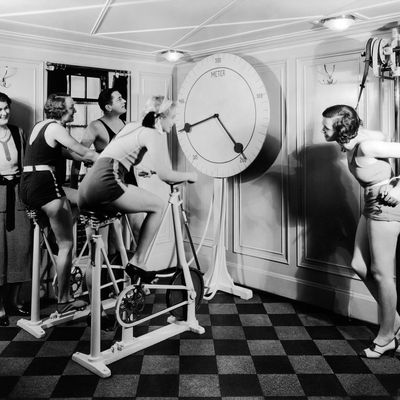
Q: I’m following my New Year’s resolution to really hit the gym hard, and seem to be feeling more acute aches and pains than usual. I’m only 30, and it’s not like I didn’t work out at all before, so I’d like to think my body isn’t falling apart. But I’m confused as to how to tell the difference between a muscle pull that will work itself out with stretching and time, and something more serious. What kind of signs should I be looking for, and how can I alleviate the pain?
A: Dr. Elliott Hershman, chairman of orthopedic surgery at Lenox Hill
“You need to exercise regularly to get to know your body and the signs of what’s pain,” says Dr. Hershman, who’s seen his share of said pain: He’s the team orthopedist for the New York Jets. Though it sounds like you didn’t jump into an involved exercise regime entirely cold, Hershman strongly warns against “not exercising all year and then going crazy” — it’s a perfect set-up for injury. That said, you might be experiencing one of the most common of muscle overuse conditions, called “delayed muscle soreness” — this is what happens when “you hit the gym, you lift weights, and the next thing you know, everything hurts.” It may happen about 24 hours after your workout and can stimulate “Did I injure myself or just pull a muscle?” confusion. What it actually may be, Hershman says, is a micro-injury to your muscle from acute overuse — doing too much, too fast. The good news: It should go away relatively quickly, and more exercise will help work it out.
On the other hand, you may have a real muscle injury if you notice any of the following: one particular muscle that chronically hurts; you feel a pop; you see swelling or a black-and-blue mark; any pain that doesn’t go away in 24 to 48 hours with regular over-the counter medication like Advil; or you lose function across the joint — say, not being able to bend your elbow or ankle. “Those are signs of major injury,or a complete tear,” Hershman says, and any or all of the above mean a doctor’s appointment is in order.
“Treatment is all about trial and error,” Hershman says. “If you try something and the pain resolves, you’re okay. If the pain is continuing, go up the ladder of evaluation.” In many cases, a simple physical therapist appointment can get at an underlying issue, but don’t underestimate the importance of possibly getting an MRI: An X-ray can uncover stress fractures masquerading as tendinitis, for instance, very often in runners. And to prevent future pain, follow one basic instruction plenty of regular gym-goers ignore: Don’t stretch cold. “You should always warm up first — riding a stationary bike, going for a little jog, some low level of cardiovascular activity that increases blood flow to the muscle and allows them to become a little more flexible,” Hershman says. “The best time to stretch is actually at the end of your workout.” Surprised?
Got a health question? Send it to askadoctor@nymag.com and we’ll find a doctor to answer it.





























